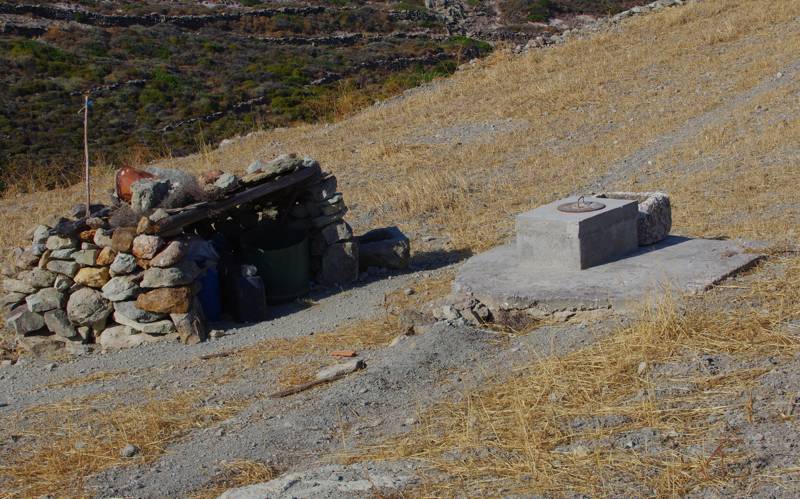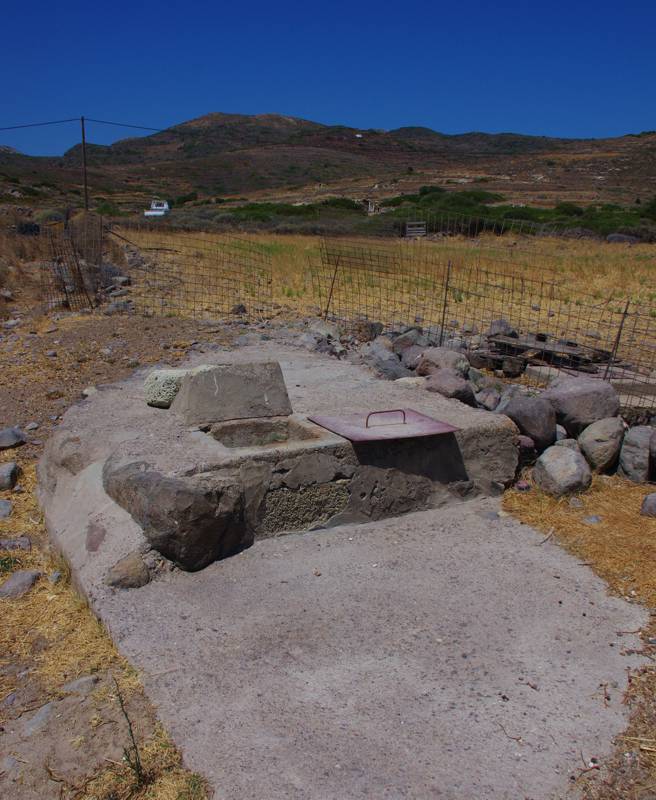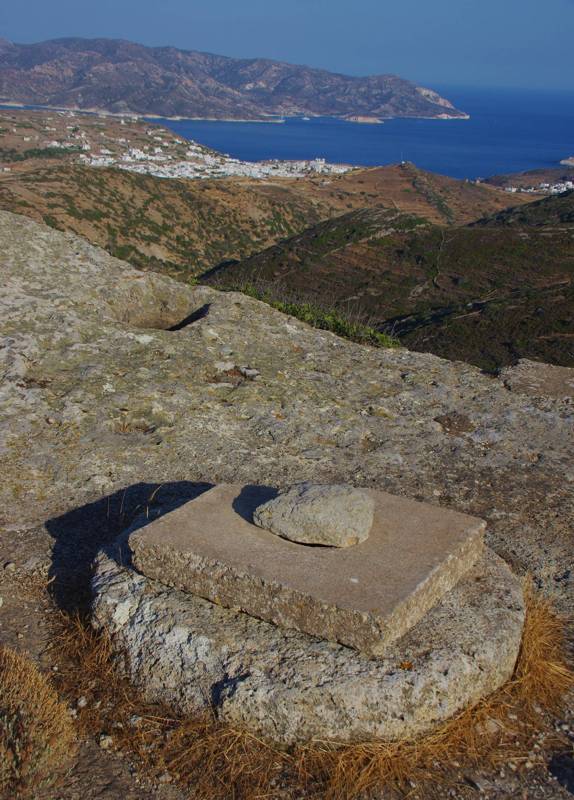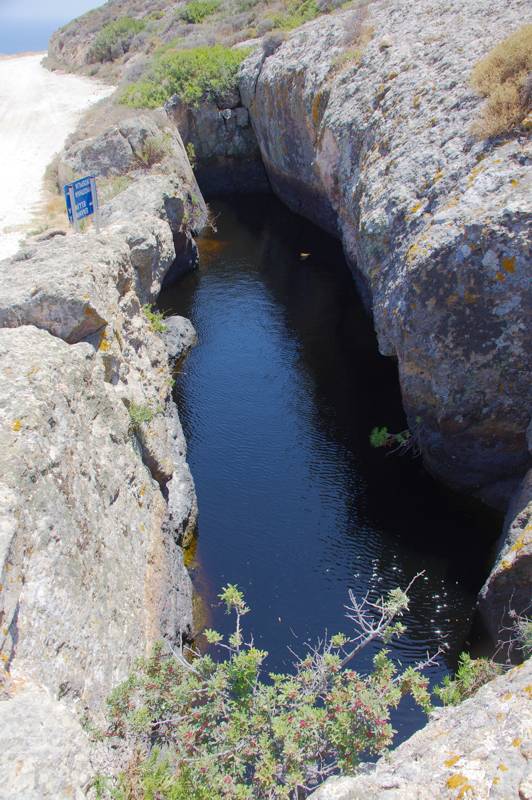Water on Kimolos
Water on Kimolos

Cistern in Amarantos
Kimolos is a completely anhydrous island. With the exception of some coastal springs, most of which are sulphurus, there is no water source on the island. So, from the beginning of time, water supply for humans and animals comes from rainwater, gathered either from wells or - more often - from cisterns.

Pigados, the largest well on Kimolos
The real wells, which collect the water of an underground aquifer, are scarce and are allways found to the mouth of the ravines, near the shoreline. The best known of these wells is Pigados, an old large well, now accompanied by two newer wells.

The large cistern on upper Profitis Ilias
Drinking water is provided by innumerable, usually small, cisterns near the houses or scattered in the rural area. In Chorio, potable water comes from a several dozen old cisterns. Similarly, in each estate on the mountains there is a small cistern, which until recently provided drinking water for both animals and humans. However, despite the heavy reliance on rainwater, there is not any large water collector on the island.

The "Bourdektis" in Agii Anargyri
Kimolos' unique feature - in relation to other nearby islands - is the presence of artificial open-air water tanks, carved into impenetrable volcanic rocks, called by the locals "bourdektis". Bourdektis water tanks are similar to "souvalas" found on Aegina island on volcanic rocks, the two islands belonging to the Aegean volcanic arc. Kimolos's "bourdektis" are relatively large and hold water throughout the year.
A hiking and nature guide of topoguide app series, dedicated to Kimolos, is under development. However, all available cartographic information is already included in the application topoguide Greece, available for both Android and iOS (iPhone και iPad) devices.

